
Swastika in Canadian buildings and culture
In the preceding few articles, we saw the swastika symbol in many ancient American schools, monuments, library, museums, buildings etc. In this article, we will see the use of Swastika in ancient Canadian culture.
Swastika in Ontario, Canada
In Ontario Canada, there is a town named swastika. The short introduction on the origin of this little town is as follows:
The Northern Ontario Railway and Temiskaming built a watering station near the swastika town post where the miners and prospectors flooded into the area. In 1909, adjacent to T&NO railway tracks, a new mine called Lucky Cross (after the Swastika symbol), was established to produce gold. The opening of this mine was then followed by new hotels, schools and stores. As a result, this little town flourished. Good luck ‘Swastika’ symbol indeed changed the fortune of this little town swastika and its inhabitants. In addition to this, swastika church, swastika fie hall, swastika public school and swastika Laboratories can be found in this little town. This town celebrated its 100th anniversary in June 2008.
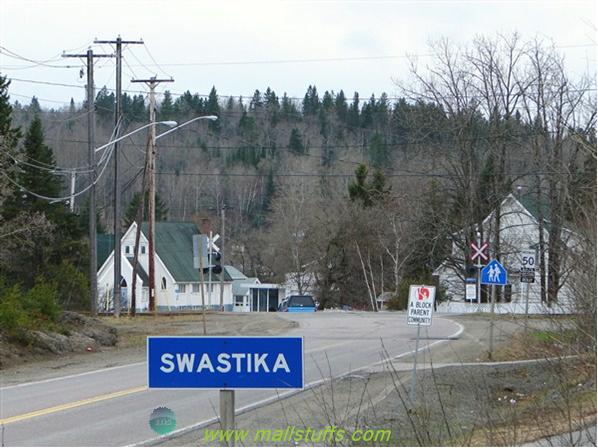
Swastika Town, Ontario
During World War II, Canadian government pressurized local citizens to change their town name from Swastika to Winston so as to honor Winston Churchill, the then Prime minister of England. Rather tha bowing down to government pressure, inhabitants of this littlt town show tremendous courage in protesting against the government decision to retain their beloved name ‘Swastika’. Ignoring locals portest, government replaced the banner of ‘swastika‘ signs and banner by winston’. This action of government enraged the locals who tore down all the Winston signs and restored the Swastika name & sign (good for them) with the following message, "To hell with Hitler, we came up with our name first". After this incident, Canadian government never thought of changing this town name again. In fact, the government installed new board signs to make the visitors/Tourist aware of the reasons behind the name swastika and also to inform the tourist that the name swastika has nothing to do with German Nazi party. Kudos to the Canadians

The town of Swastika, Ontario.
Swastika in Quebec, Canada
In Quebec City of Canada, Swastika brick pattern can be found at the top of the house at 75-81 Troy Street, in Verdun. This building is supposed to be built in the 1930s
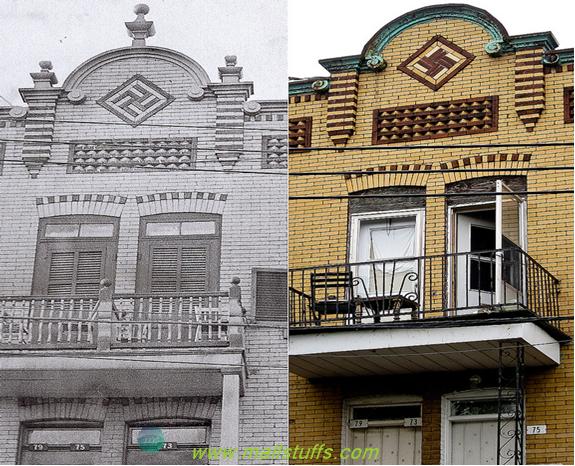
Troy Street, Verdun
Swastika in British Columbia, Canada
In Ladysmith, British Columbia, Decorated swastika can be found in outer architectural designs of trevaller's hotel. Built in classical Edwardian architecture, this commercial building has symmetrical, simple right facing swastikas in the exterior brick facades. In addition to this, heavy cornices expresses an more exuberant Victorian aesthetic.
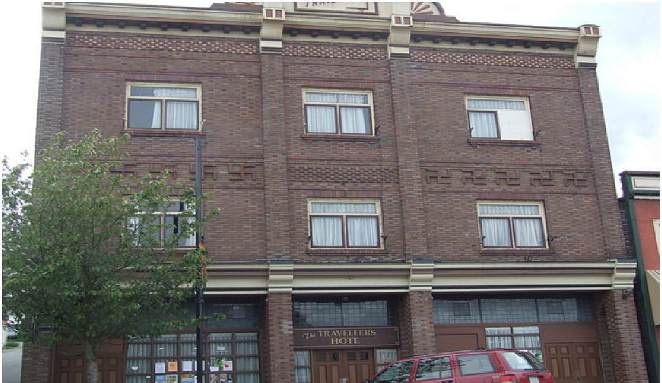
Traveler’s hotel, British Columbia
Swastika in Canadian sports
From 1905-1916, “Swastika” was the name of ice hockey team based in Windsor, Nova Scotia. To the local ice hockey fans, Swastika meant everything to them, “Recognition”, “Good luck”, good fortune”, etc. To locals, "SWASTIKAS" was the high-scoring best ice hockey team whose players proudly boasted the swastika symbol on their jerseys. This was the best ice hockey team of its time and other teams found it impossible to beat “Swastika” ice hockey team. Commentators and sport enthusiasts often described "Swastikas" hockey team as exciting, flashy, entertaining and very seldom beaten. Windsorians believed the symbol “Swastika” was very lucky for them.
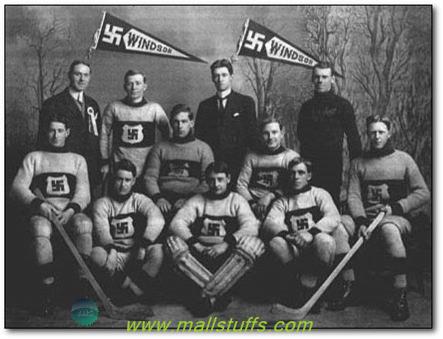
Swastika in Edmonton hockey team
Unlike the other Swastika hockey team, "Edmonton Swastika" hockey team is not known for their game and excellence in hockey. But they were quite known for their fancy pantaloons and the use of a pre 1915-stick (wide on one side only) by its goalie. This ladies hockey team played very limited games and only in the city of Edmonton with the exception of Winter Carnivals in places like Banff and Calgary. One of the reasons for their fewer tours may be the unfavorable long road trips in the harsh climate of prairie regions.
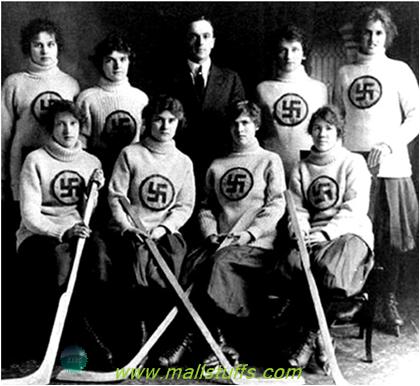
The Edmonton Swastikas
Swastika in Fernie hockey team
Taking inspiration from the Edmonton ladies hockey team, just a little west to Edmonton in British Colombia, new ladies hockey team came into prominence in 1922. Fernie Hockey team of British Columbia included swastika in their team name at a time when swastika was widely recognized as a symbol of luck and fortune. It was one of the best women hockey team of its time and enjoyed plenty of success in its 4 years till 1926. In 1922 Calgary Winter Carnival, “Fernie swastika” defeated the home team Calgary Regents in the final to win the cup while in 1923, “Fernie swastika” beat the Vancouver Amazons to again become champions of the Banff Winter Carnival Women’s Ice Championship”. In 1926, they ended up as runners-up at the Banff Winter Carnival losing to the Edmonton Monarchs in the last game.
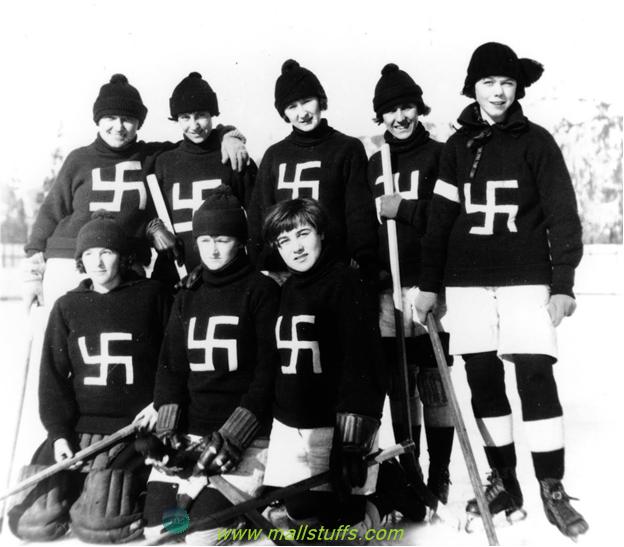
Young Canadian girls wearing Sweaters and holding hockey sticks with swastika designs
Swastika in Canadian postage stamps
Before the start of world war, Swastika was widely used in Canadian postage stamps. In the period 1924 - 1932, postage stamps with swastika were produced by many private commercial airlines to affix it on the postcards, sent to areas that were inaccessible by other means. These commercial airlines were under the direct jurisdiction of post office and it was mandatory to affix postage stamps on the back of the postcards or letter covers.
Among the airline companies to first use swastika in postage stamps were Elliott-Fairchild Air Service and Jack V. Elliot Air Service in 1923. On April 7, 1926, Elliot-Fairchild Air Service produced more postage stamps with yellow background of swastikas.
In 1931 at Newfoundland, historic transatlantic flights were commemorated by the 1$ postage stamps adorned with swastika at its four corners. In May 1932, the same stamp was used to commemorate the flight of the airliner Dornier DO-X to Southampton.
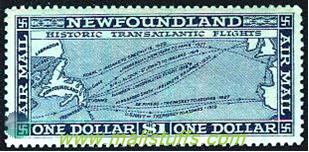
Swastika in Montreal Museum of Fine Arts
Founded in 1960, The Montreal Museum is one of the major museum of Quebec, Canada. Thanks to the large donation from businessman James Ross, it was moved to its current location inn 1922. Located on the historic Golden Square Mile stretch of Sherbrooke Street, It is among the most prominent musuem of canada and also the largest one in montreal.

Montreal Museum of Fine Arts
Swastika in York University Campus
Established in 1959, York University is the second largest graduate schools in ontario.It is also Canada's third-largest university. Being a public research university, York has pioneered some of the first PhD programs in Canada, in various fields including women's studies. York University's law and business school continuously have been among the top ranked schools of Canada and the world.

York University campus in Ontario
Swastika in Native Canadians culture
Referring to such Native Americans, an international organization named “Reclaim the swastika” is strategically urging the international community to oppose/Remove the ban of swastika symbol imposed by many countries as they believed it’s a symbol of their glorious ancestral past. They are coming up with various banners/Advertisements/Articles etc to show the rich history of swastika and an explantion on why it is wrong to remove/Ban the swastika. Below is one of such banner.
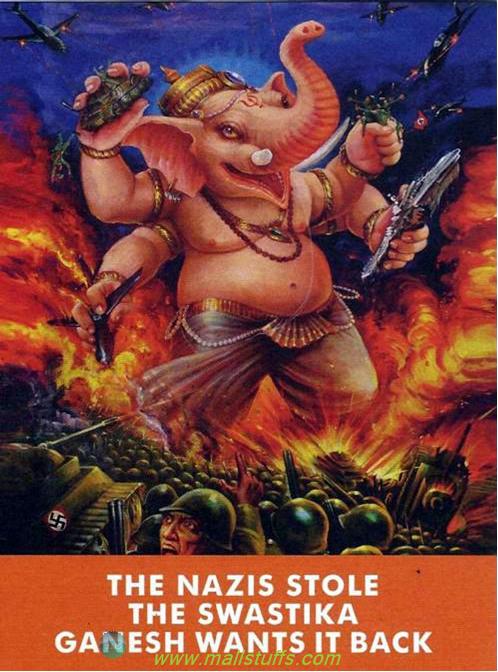
In Hinduism, swastika is usually associated with lord ganesha. This banner depicts the wrong use of Symbol Swastika by Nazism, as a direct insult of lord ganesha and so, here lord ganesha is shown fighting against Hitler army to reclaim the lost significance of swastika symbol.
Native American also known as Indians used swastika in their art, decorations on quilt, jerseys, clothes etc. Below is the picture of such Native Americans Girls camp from Alberta, Canada. Notice the swastika on their scarf, Headband, clothes etc.
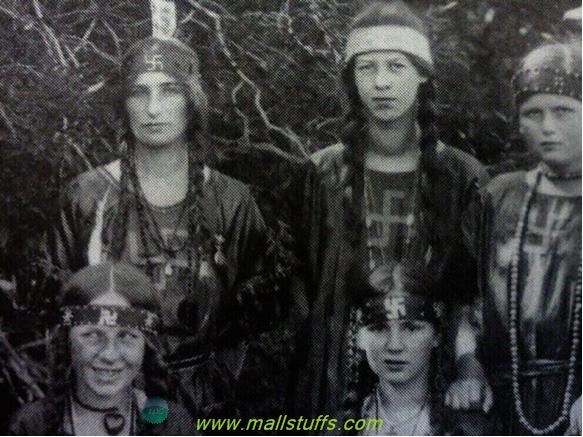
Girls Camp, Alberta, Canada around 1920
Native Americans (Indians) who herd animals and cattle’s were better known as cowboys. Since the majority of the cattle consisted of cows, guys who usually herded such cattle’s were called as cowboy. So, the cowboy literally means “"a boy who tends cows”. In Sanskrit, Cowboys are called as gwala, meaning “Cow herder”. So technically, one of the Indian major deities, “Lord Krishna” was a cowboy. From Mexico, their style of riding a horse and wearing a rounded hat spread across United States of America and Canada. Even the girls copied their attractive style and were called as Cowgirls. This style of herding cattle’s was later copied by young boys of South America and Australia, who perform work similar to the cowboy in their respective nations.
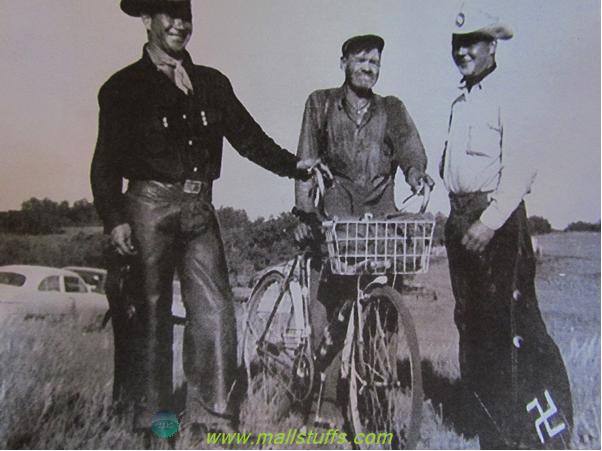
1940 pic of the Canadian Cowboy with clothes in scripted with swastika
Swastika in Canadian Wendy
Below swastika was discovered during the renovation work of the Canadian “dark Wendy’s”. Wendy is an international fast food chain restaurant founded by Dave Thomas on November 15, 1969, in Columbus, Ohio, United States. Wendy's is the world's third largest hamburger fast food chain with approximately 6,650 locations, following MC Donald and burger king.

Use of Swastika by Walmart
Beside these, swastika is widely used by migrated Asians mostly from Hindu and Buddhism religions. Noticing the huge number of migrants, Wall-mart recently celebrated Chinese New Year in Canada. In this festival celebration, they used the swastika symbol in their decorations and exterior ornamentation. Below is the one of such red and gold swastika motif

Conclusion:
In this article, we saw the significance and deep connection of swastika symbol with Canadians. Philosophical teachings, Deeper meanings and feelings are unfolded in the comprehensive and distinctive design of swastika. In swastika , one can find the auspiciousness and spirit of well-being of every individual, every family, society, nation, and the whole creation. This is why, even today, swastika has a universal reverence and significance. We need to understand its true meaning, its implication and must be ever-ready to adopt it in every walks of life. Forget the past wrong use of swastik and let the spiritual teachings and auspicious sentiments osf swastika enshrine your thoughts, aspirations, and deeds. Let it enlighten your heart and mind, grasp the rich knowledge and wisdom of swastika by both hands.